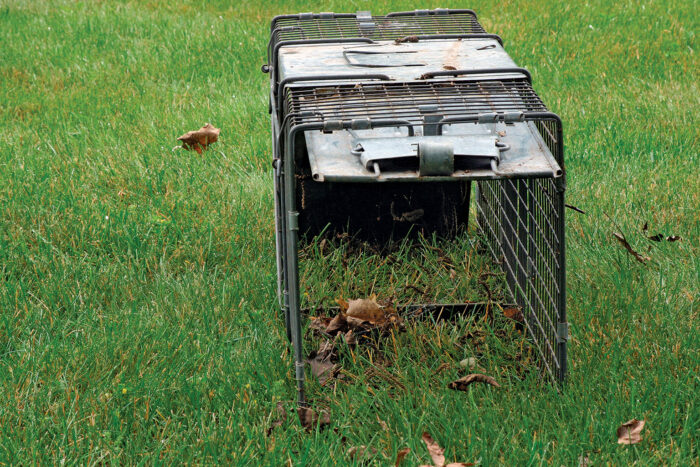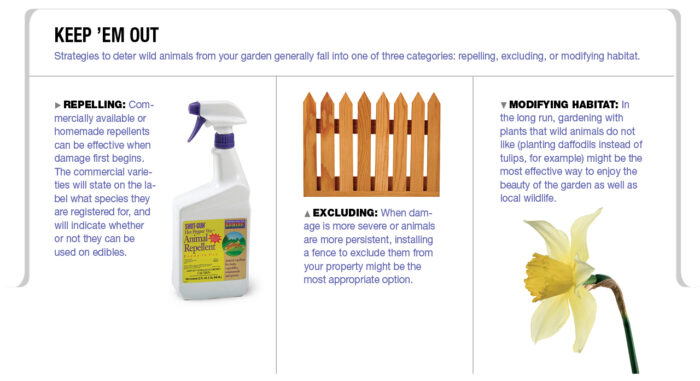Traps Aren’t Always the Answer to Furry Garden Pests
If groundhogs, rabbits, or other creatures are wreaking havoc on your garden, consider other deterrents instead

In most people’s minds, humane traps are no-kill, cagelike devices that capture animals using bait. Some claim that certain snares and padded leghold traps are humane, as well, but these devices are more often inhumane because of the injuries they can cause as animals struggle to free themselves. It is important to remember that any trap can be inhumane when used inappropriately. An animal left in a cage for hours in extreme heat or cold can suffer extensively.
Removing pests by force is usually a short-lived solution
Whenever we begin to think about wild animals as pests, we set up a negative image of them that leads, all too often, to a desire to eradicate. Removing or killing a problem-causing animal, however, typically leads to only a short period before another takes its place. If we visualize wild animals as creatures that occasionally cause conflicts rather than as pests, we can apply conflict-resolution strategies that create environmentally responsible and humane solutions. There are, fortunately, a growing number of resources, such as one found at the website of the Humane Society of the United States, that can provide gardeners with realistic, effective, and humane solutions to animal problems.
Be sure to check local laws before attempting to trap any animal
If, after careful consideration, you determine that you would still like to trap and remove an animal, it is important to be aware of the laws in your state that regulate trapping, especially because this may call for a permit. Sometimes you will be allowed to relocate problem-causing wildlife—although you should be very careful not to separate mothers from their litters—more often, the law will require that the animal be killed. Then your local animal control agency may be the best source of advice.
The important thing to remember is that wildlife is indeed that: wild. You’ll need to use extreme caution to keep from being bitten and the animal from being injured. You’ll also have to find a legal space in which to release the animal. It is safest to avoid trapping an animal yourself; contact your local animal control agency if you cannot coexist with local wildlife and find it necessary to have a “pest” removed.






Comments
Log in or create an account to post a comment.
Sign up Log in